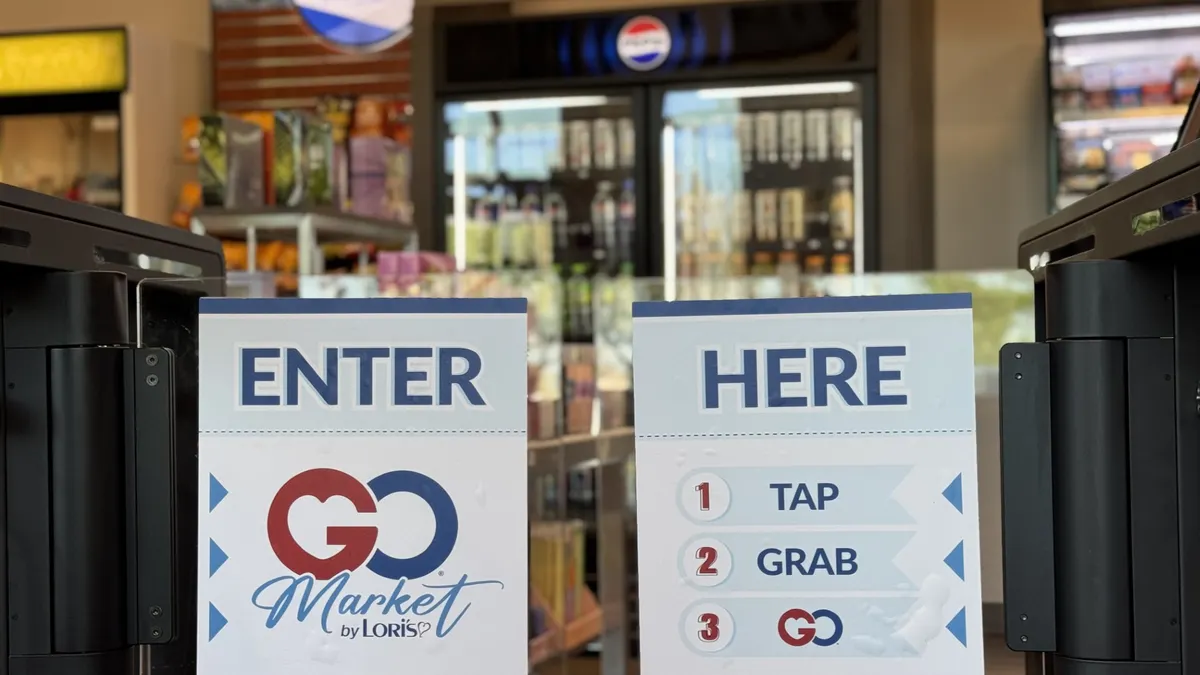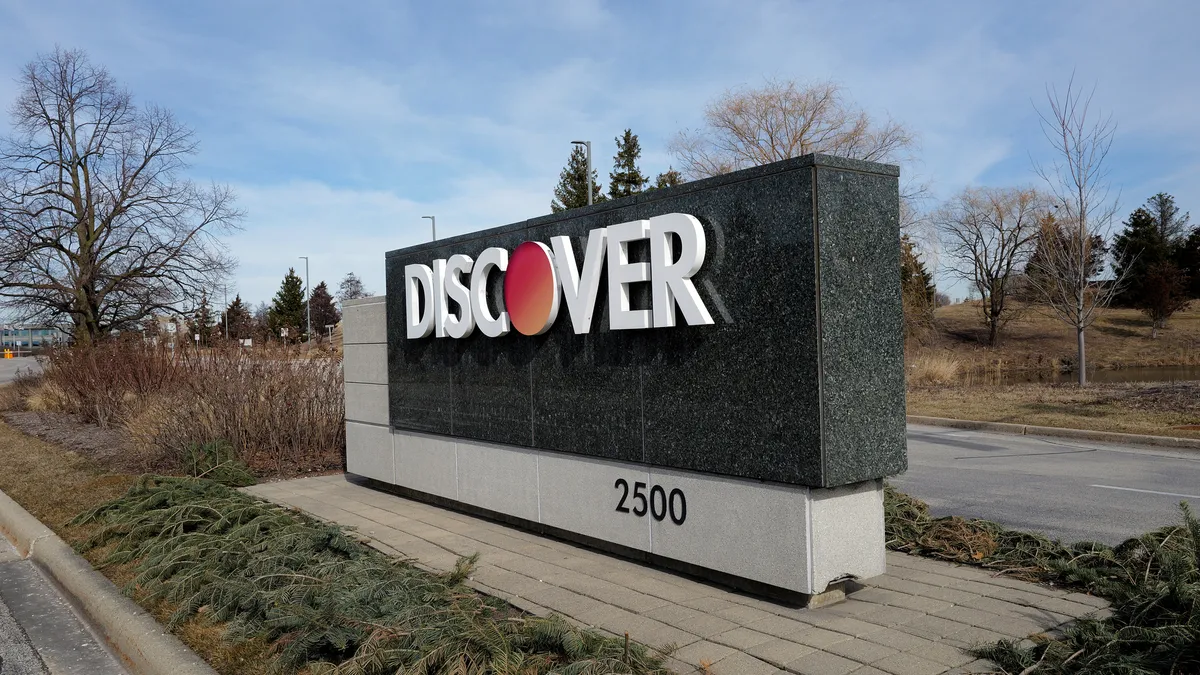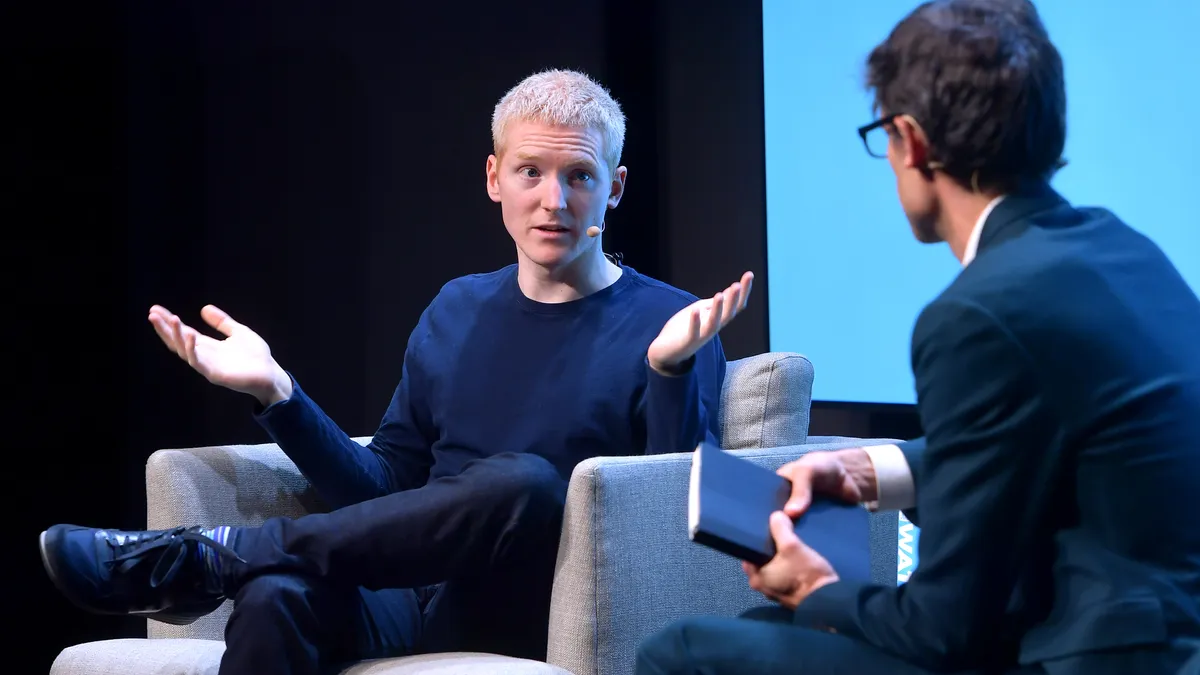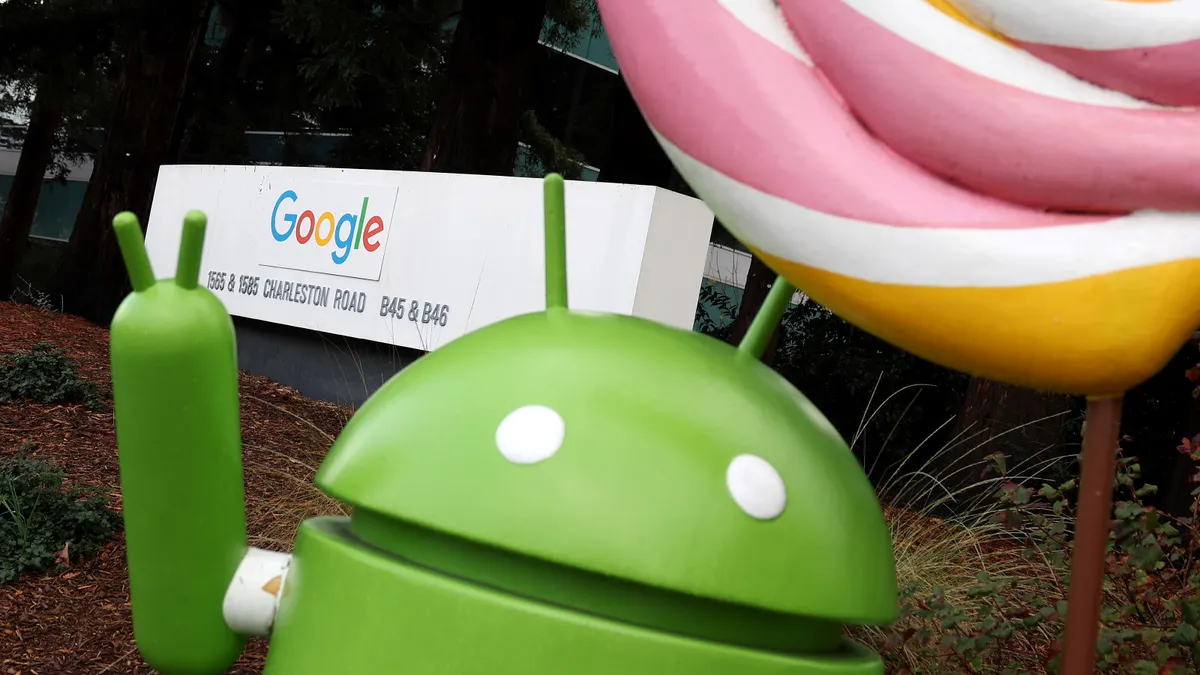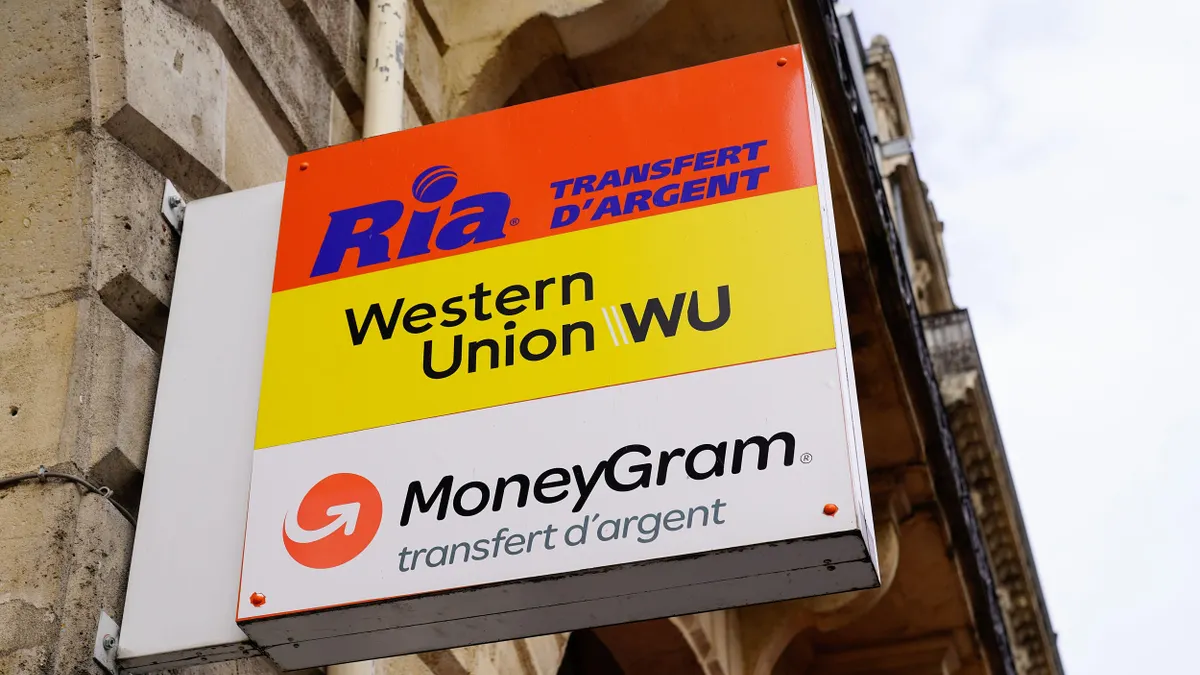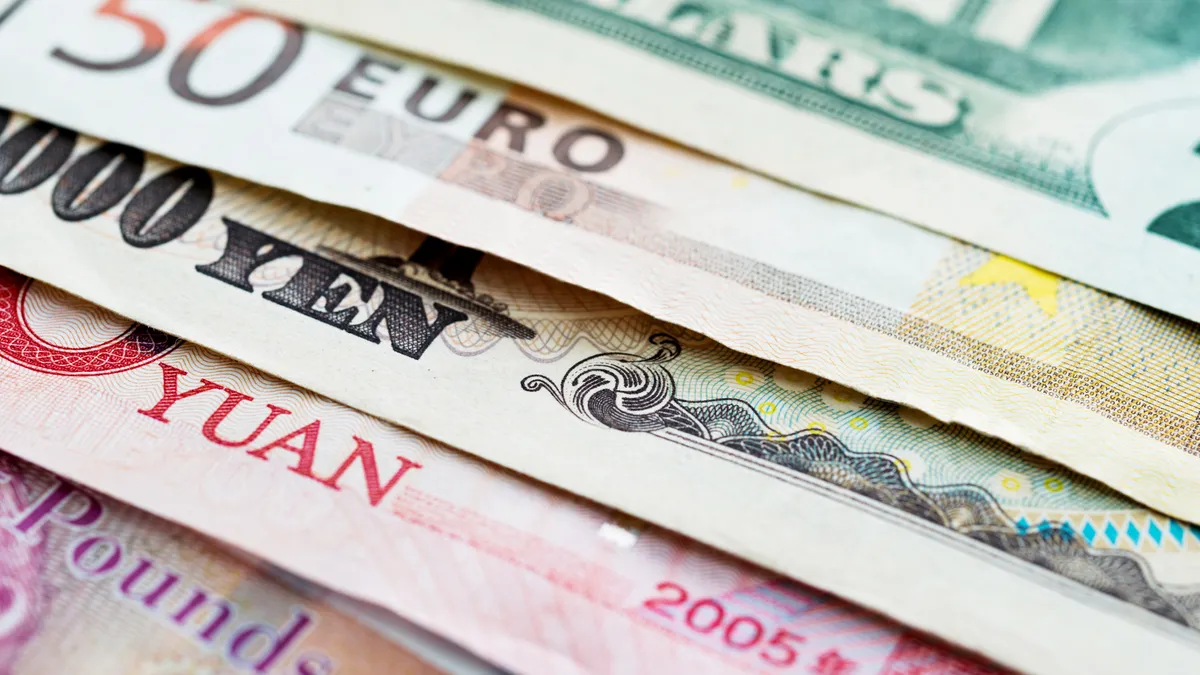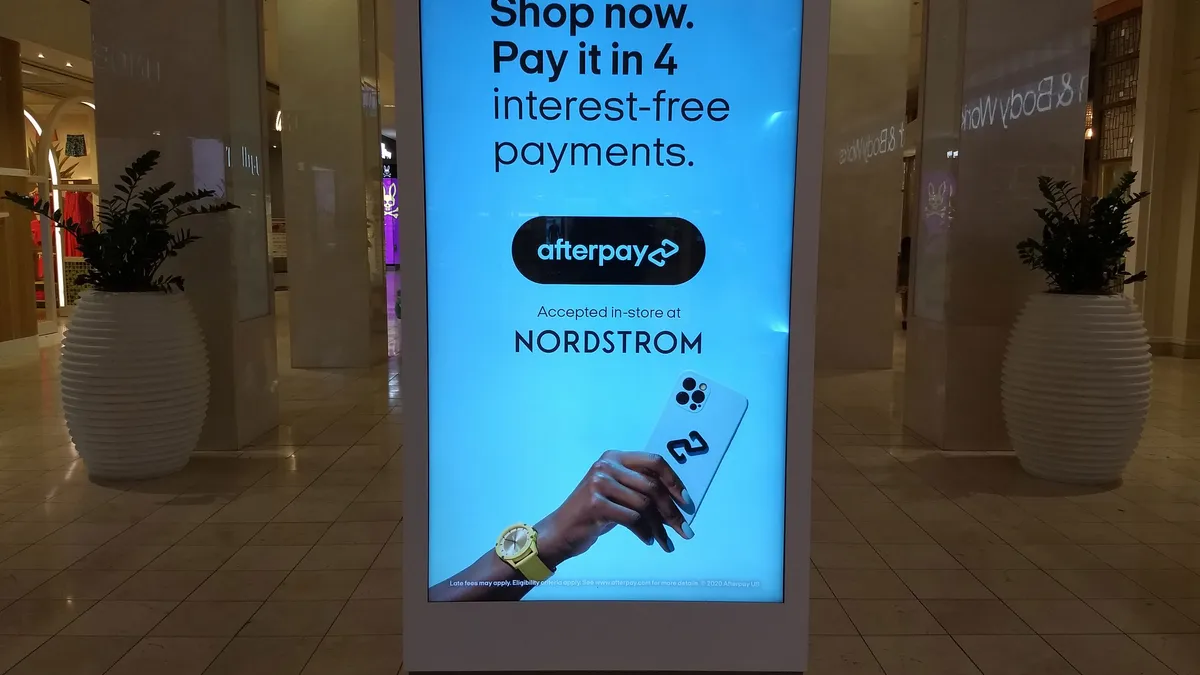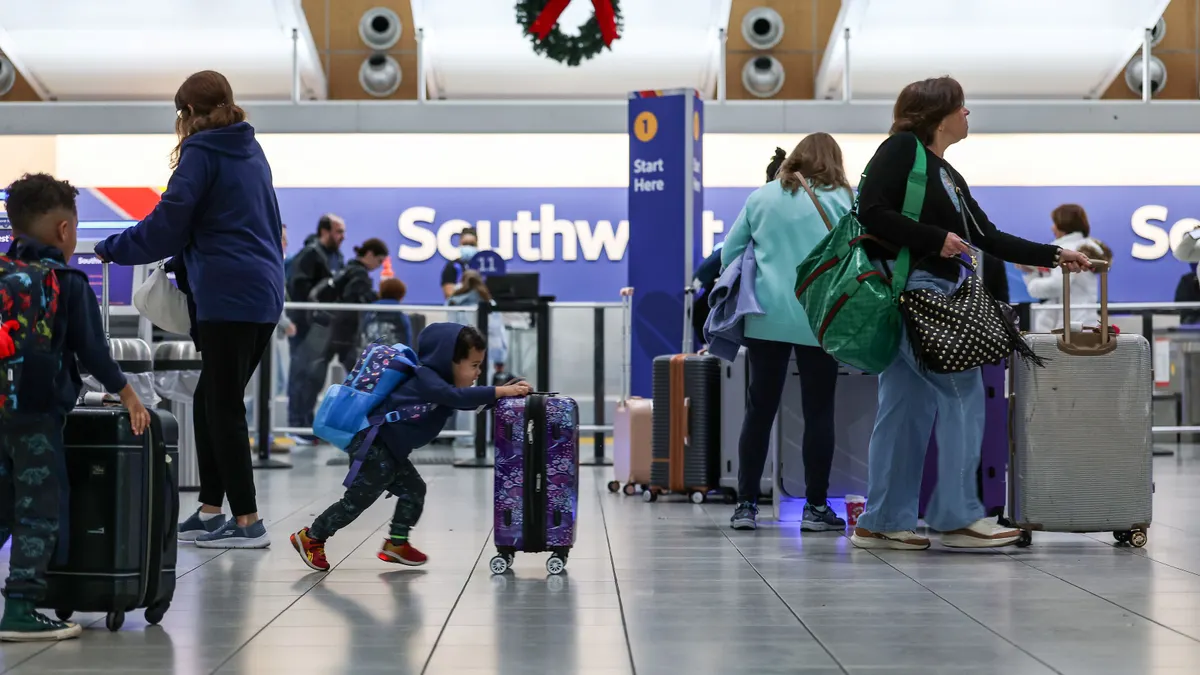When the checkout-free payment provider Grabango shuttered in late 2024, it dealt a second major blow to checkout-free shopping following Amazon’s decision to scale back its “Just Walk Out” experiment.
However, that progressive, lower-cost, digital approach to in-store retail payments isn’t dead. A technological boost could still help checkout-free payments succeed, say industry professionals and consultants.
“I still believe there's huge opportunity in this space,” Ken Fenyo, who was Grabango’s chief marketing officer, said in an interview in May. “Artificial intelligence will help companies put together the kind of solution that the market needs.”
Even with the rise of e-commerce, the majority of shopping still happens in-person. U.S. consumers spent $5.93 trillion in retail stores in 2024, according to research from Capital One published in May, compared to $1.34 trillion online. Retailers operate on razor thin profit margins and are constantly looking to trim costs and checkout-free technology offers the enticing prospect of accepting a customer’s money without paying a cashier.
Multiple companies, including San Francisco-based Zippin and Malvern, Pennsylvania-based Cantaloupe, offer checkout-free systems for retailers and venues such as stadiums.
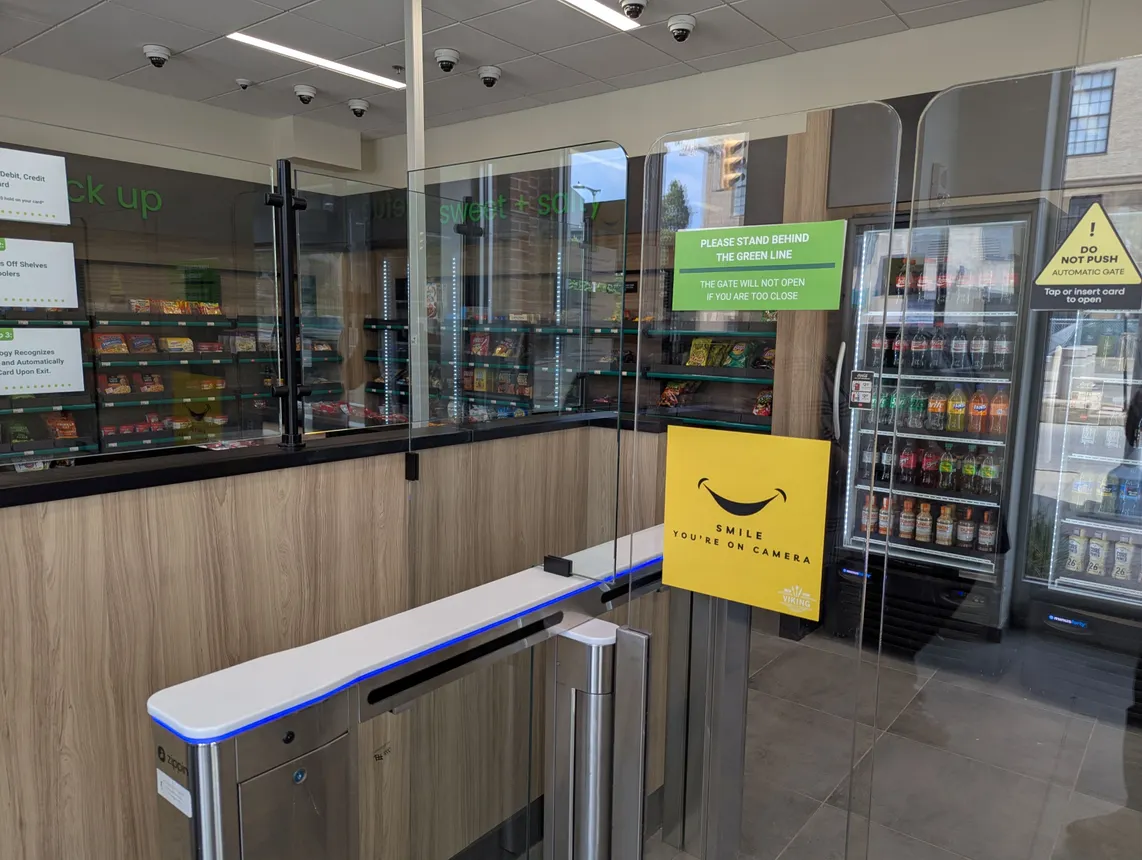
“At the most basic level, there’s always going to be an appetite for a checkout-free process,” said Tony DeSanctis, senior director of payments for the consulting firm Cornerstone Advisors.
A checkout-free system tracks a customer’s movements while he or she is shopping and automatically records their selections when they pull items off the shelf. The system uses cameras to track shopper activity in concert with shelf sensors that sense when items are picked up. Increasingly, the systems rely on artificial intelligence to recognize customer selections.
Checkout-free payments are most appealing in settings where a large number of customers want to make purchases quickly, said Krishna Motukuri, CEO and co-founder of Zippin, a San Francisco-based checkout-free payment company that has raised $37 million in equity investments. One such setting is a stadium or a sports arena, where the games have regular breaks that result in mass trips to the concession stand, he said.
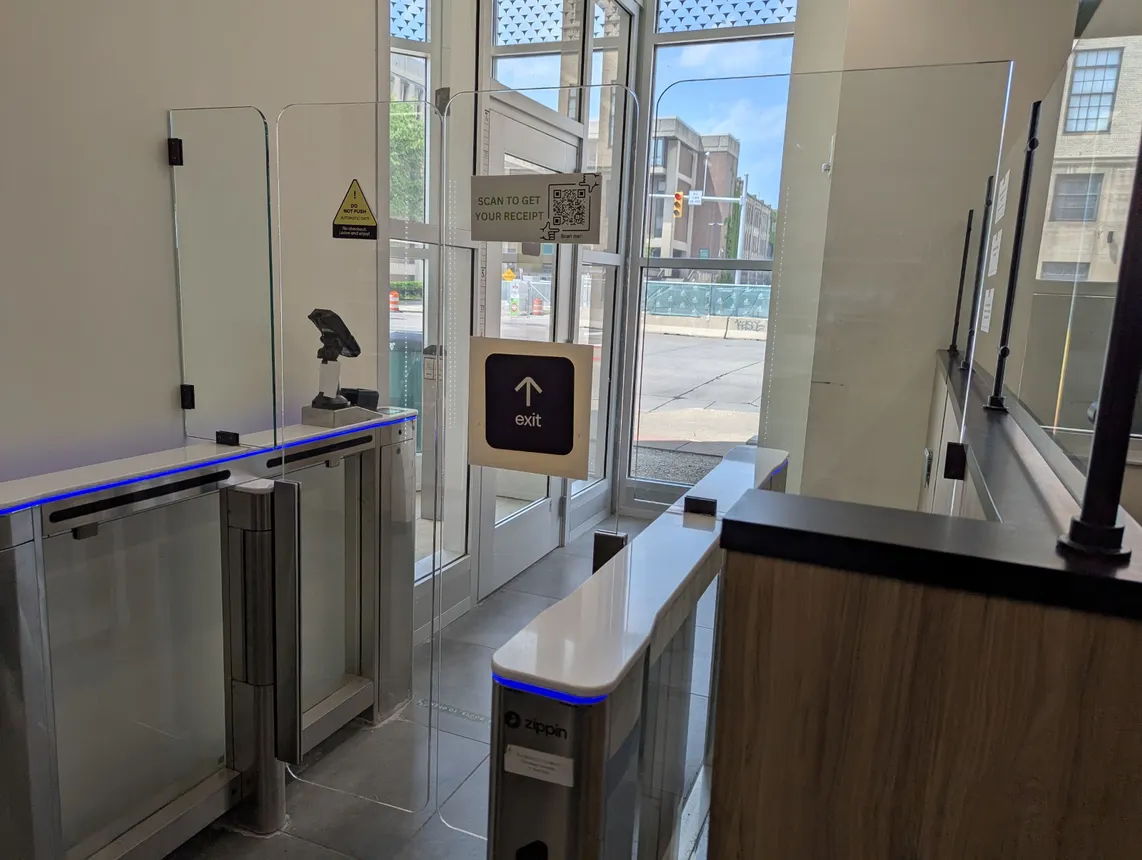
“That creates a bit of challenge where some people never line up [because they see a long line], and that ends up being lost revenue,” Motukuri said. If customers can purchase faster, “more people are willing to shop and that revenue comes back in.”
The fan experience is top of mind for stadium operators that use checkout-free concession stands, said Adam Nuse, senior vice president for the Tennessee Titans. The Titans play in Nashville’s Nissan Stadium, which has checkout-free concessions.
“Shorter lines mean more time at your seat enjoying the game,” he said in an emailed statement.
The role of artificial intelligence
The technology tends to struggle with bulk-price items in a supermarket setting, like tomatoes or mushrooms. Grocery stores often charge for fruits and vegetables by weight rather than per item, which makes pricing produce an arduous task for a camera tracking system. But AI, which is advancing at an astonishing pace, will eventually improve that process.
Burlingame, California-based AiFi is already using artificial intelligence to help stores eliminate the checkout. AiFi’s cashierless system is in 300 stores globally, CEO Steve Carlin said in an interview, and it counts companies like Aldi, Dollar General and The Compass Group as customers.
“AI is first tracking a body,” he said. “The system then looks for what we call ‘activities of interest:’ When people shop for things, they stick a hand out into space, grab something and pull it back.”
If a customer reaches for a bottle of Coca-Cola, and then there is one less bottle of Coca-Cola on the shelf, the system will charge the customer for that soda bottle, Carlin said. He contended that AiFi’s system is more than 99% accurate and has advanced enough to be used in any store or supermarket.
Lori’s Gifts, a chain of gift shops with around 400 locations mostly in hospitals, uses AiFi’s system to keep its shops open around the clock, said Brandon Glenn, the company’s vice president of marketing.
“We can meet the growing demand for 24/7 access without the need [for customers] to wait in line, or rely on traditional staffing,” he said.
History of checkout free shopping
Checkout-free payments evolved from self-checkout kiosks.
Store owners used the kiosks to cut labor costs, said John Talbott, a professor of marketing at the Indiana University Kelley School of Business who studies retail.

“Convenience stores are labor-intensive,” he said. “And it’s difficult to find people to reliably work the shifts, because they often are open 24 hours.” Stores have trouble hiring workers for the night shift, or who are willing to stay in a position that requires overnight work, Talbott said.
An earlier version of cashierless checkout, the ubiquitous self-checkout line, has proven troublesome. Research shows self-checkout is an inviting target for shoplifters, raising questions about whether or not it is worth the savings, DeSanctis said.
Enter checkout-free shopping, which carries with it the cost savings of a self-checkout with less opportunity for theft.
The first store to offer cashierless payments was an Amazon Go store in Seattle that used the company’s “Just Walk Out” system and opened to the public in 2018, Talbott said.
Grabango — which was founded in 2016 — officially launched its first checkout-free system at a GetGo convenience store near Pittsburgh in 2020. Then, in a test of a broader market audience, grocery chain Aldi opened a checkout-free store in the Chicago suburb of Aurora using Grabango’s technology in early 2024.
Why Grabango failed and Amazon pulled back
San Francisco-based Grabango wasn’t adding locations fast enough to impress potential investors and secure a needed funding round, said Fenyo, who is now an independent consultant.
Not enough retailers were ready to widely use checkout-free systems, Fenyo, said. “They were testing it slowly, rolling it out. But it wasn't at the pace venture capitalists wanted.”
Store customers’ gradual acceptance of Grabango technology is part of what gives Fenyo the confidence that there will eventually be a strong market for checkout-free shopping.
Grabango’s research found shoppers were initially repelled by the technology, but started to prefer checkout-free payments once they use them a few times, he said.
“We had stores with Aldi, and Circle K, and I think we were seeing adoption,” Fenyo said.
When Amazon announced last year that it was removing checkout-free technology from its U.S. supermarkets, a company spokesperson told CNBC that customers liked the system, but preferred shopping for deals and checking their receipts as they browsed the store.
Amazon's system also had another major flaw, Talbott said. It made returns and customer disputes more complicated since there were fewer employees in the store.
However, even as Amazon removed checkout-free systems from its own stores, it continued to sell the technology to third parties such as stadiums, hospitals and college campuses. The Seattle-based e-commerce giant revealed last year that it was installing a checkout-free system at St. Joseph’s/Candler hospital system in Savannah, Georgia, making it the first hospital to use the technology. A St. Joseph’s/Chandler spokesperson did not respond to a request for comment.
Why checkout-free technology can still work
Artificial intelligence will help companies put checkout-free systems in more stores, Fenyo predicted. “I think you're going to see that over the next few years it will begin to emerge and rapidly scale up,” he said.
As AI improves, it will make checkout-free systems more accurate and efficient, and able to identify more items, expanding the number of stores that can use checkout-free technology, Fenyo said.
“It’s hard to see what retail formats would work in a way that 100% of the items would lend themselves to this technology,” Bowman said. “And product assortments always change.”
But as artificial intelligence improves, it will reach the point that a checkout-free shopping system can recognize more opaque items, Fenyo said.
“We were close [at Grabango], but not quite where we needed to be,” he said.
The costs are also coming down, Motukuri said. And as expenses continue to fall, “you’ll start to see more of these stores around the country.”
And not everyone is convinced it can work.“I've always wondered if it was a solution looking for a problem,” said Douglas Bowman, a marketing professor at Emory University’s Goizueta Business School who studies consumer behavior.

Cutting costs is appealing to merchants, but consumers aren’t clamoring for the technology, he said.
“If Amazon can't do it, I don't know that anybody can,” Talbott said. That company is “extremely capable from a tech standpoint” and has “infinite amounts of money to spend.”
Major grocery chains and retailers either did not respond to a request for comment or declined to discuss their use — or avoidance — of checkout-free systems.
A spokesperson for Giant Food declined to comment while spokespeople for Walmart and Kroger did not respond to requests for comment.


